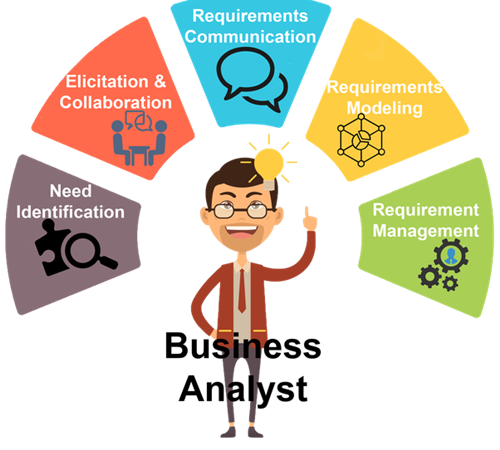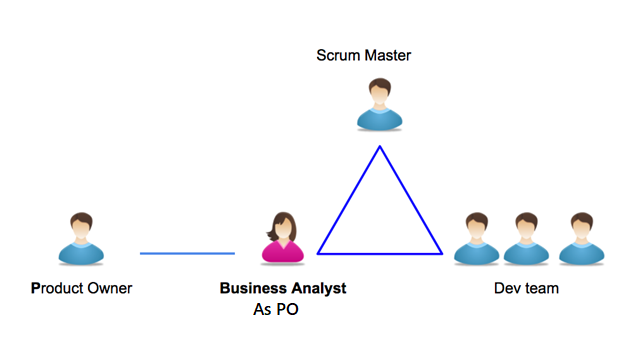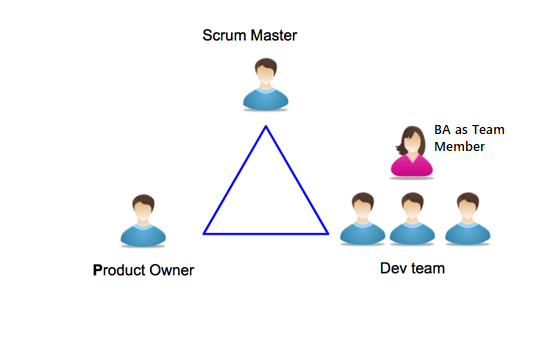Agile BA Role In Scrum
Who is a Business Analyst (BA)?
A Business Analyst (BA) is a professional who acts as a bridge between business stakeholders and the technical team. The BA helps understand the business needs, define requirements clearly, and ensures that the final product solves real business problems.
Think of a BA as a translator who speaks both business language (what the customer wants) and technical language (what the developers need to build).
Example: For an e-commerce website, the customer says, "We want an easy checkout process". The BA translates this into detailed requirements: "Add a one-page checkout with saved addresses and payment method options".
Role of a BA in Scrum
Scrum doesn't officially define the Business Analyst role, but many teams include BAs to support the Product Owner and Development Team. A BA in Scrum helps with:
- Requirement Gathering – Understanding what the user needs.
- User Story Creation – Writing clear and testable user stories in the backlog.
- Clarifying Requirements – Explaining business needs to developers.
- Acceptance Criteria – Defining what success looks like for a feature.
- Collaboration – Working closely with Product Owner, Scrum Master, and developers.

Example in Scrum: The BA works with the customer to understand the "Track My Order" feature. Then writes a user story:
As a customer, I want to track my order in real-time so that I know when it will arrive.
Responsibilities of a Business Analyst
Here are the main responsibilities of a BA, especially in Agile/Scrum teams:
- Understanding Business Needs:
- Meet with stakeholders to gather the "what" and "why" behind a project.
- Analyze existing systems and propose solutions.
- Example: For a bank app, understanding why users are abandoning online loan applications.
- Writing User Stories and Requirements:
- Break down features into small, testable user stories.
- Write clear acceptance criteria for each story.
- Example: User story – "As a user, I want to receive an OTP during login so that my account stays secure."
- Facilitating Communication:
- Act as the go-between for business users and developers.
- Make sure everyone is aligned on what’s being built.
- Example: When a developer is unsure whether the user should be able to update their email ID, the BA clarifies this with the client and updates the story.
- Validating Solutions:
- Help test features to confirm they meet the business goals.
- Participate in UAT (User Acceptance Testing).
- Example: Before launching a new "Add to Wishlist" feature, the BA checks if it behaves as expected across different devices.
- Supporting Product Owner:
- Refine the backlog.
- Participate in grooming sessions, planning meetings, reviews, and demos.
Business Analyst as a Product Owner (PO)
In some teams, especially in smaller companies, the BA takes on the role of Product Owner.

Responsibilities when BA is PO:
- Own the Product Backlog.
- Prioritize work based on business value.
- Make decisions on what features get built and when.
- Be available to the team for questions and clarifications.
Example: As a PO, the BA decides that the "Search by Location" feature should come before "Add Reviews" in a hotel booking app.
Benefits of BA as PO:
- Strong understanding of business and technical aspects.
- Can balance business goals with user experience.
- Speeds up decision-making.
Note: This only works if the BA has decision-making power and is empowered by stakeholders.
Business Analyst as a Team Member
In Scrum, if the BA is not acting as a Product Owner, they can be part of the Development Team.

What does a BA do as a team member?
- Help break stories into tasks.
- Participate in Daily Stand-ups.
- Support testing, documentation, and design discussions.
Example: During the sprint, the BA works alongside the developers to clarify questions about the "Apply Promo Code" feature and helps test it before the review meeting.
